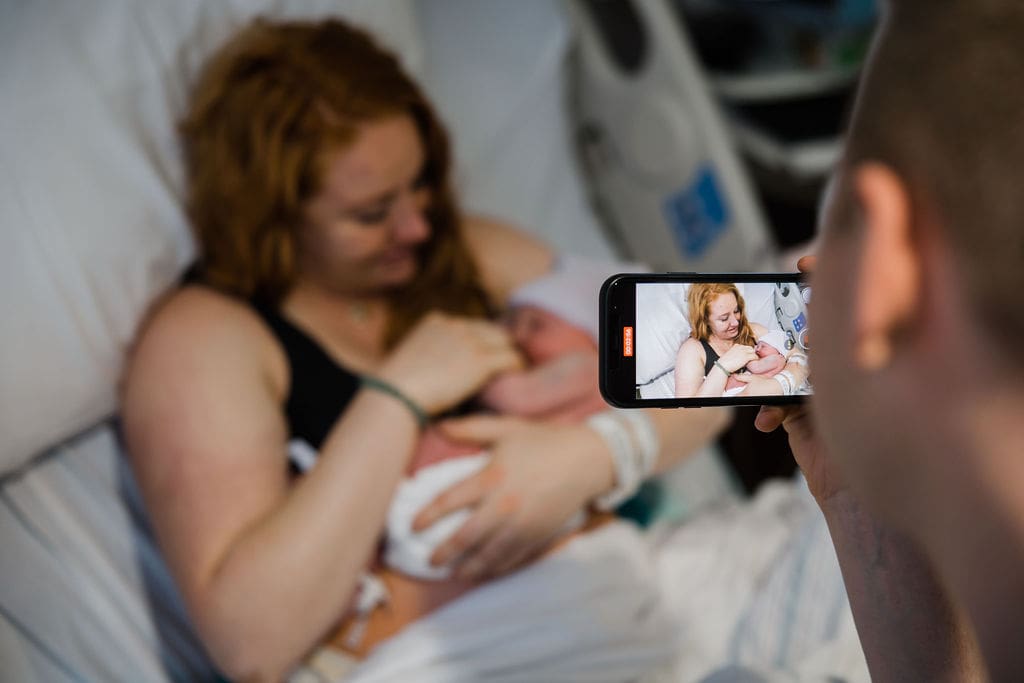Birth Story: What Went Wrong & How I Navigated It
Episode 16: Spotify | Apple Podcasts | YouTube
View transcript on Buzzsprout
What happens when everything goes wrong—but you still walk away okay? In this deeply personal episode, I (Amanda) share the full birth story of my second son, including a rare complication called uterine rupture. More importantly, I breaks down the 3 protective factors that helped prevent lasting trauma—and how you can build them into your own life too.
What We Cover in This Episode
- My unexpected VBAC birth story
- What uterine rupture is and why it’s so dangerous
- How trauma isn’t the event—it’s the internal response
- Three key protective factors that buffer trauma
- How to apply these trauma buffers to your own life
Understanding Trauma Through a Birth Story
Trauma isn’t about what happens to you—it’s about what happens inside of you as a result.
That’s the thread running through this story. I experienced what many would call a traumatic birth: a failed VBAC, intense back labor, a uterine rupture, emergency surgery, and a long recovery. But because of three core trauma buffers—regulation, safety, and support—my nervous system didn’t imprint it as psychological trauma.
Here’s what you need to know:
What Is Trauma, Really?
According to trauma expert Dr. Gabor Maté, trauma is “not what happens to you, but what happens inside you as a result of what happens to you.”
In other words:
- Trauma isn’t the C-section or rupture.
- It’s the overwhelm, helplessness, or lack of integration that follows.
This distinction matters. It’s why two people can go through similar events and walk away with vastly different outcomes. My body experienced undeniable physical trauma—but my emotional, mental, and nervous system state remained largely regulated. Here’s why:
1. A Regulated Baseline
I spent months prepping my nervous system for this birth—regulating stress, building vagal tone, and sourcing for safety in advance. The result? A wider window of tolerance, which made even intense moments feel manageable.
I practiced what I teach: vagus nerve work, somatic safety cues, and context-choice-connection prep. (More on that in Episode 11)
Reminder: You don’t prep for a crisis during the crisis. You do it now—slowly, steadily, consistently.
Want structure and community while building this baseline? Explore the Regulated Living Membership or join me live in the Release Class, my monthly guided nervous system regulation session.
2. A Sense of Safety
I knew a home birth wasn’t for my. Despite the dream of it, I made a deliberate decision to birth in a hospital—because that’s where I felt safest.
That felt safety mattered. It grounded my, even as my birth plan unraveled. My body could stay regulated longer, and my mind didn’t spiral.
Somatic safety isn’t always about what looks peaceful—it’s about what feels protective to you.
Relevant tool: Safety comes from context, choice, and connection. These are all part of Amanda’s Restore 1:1 coaching framework, which you can learn more about here.
3. Robust Support Systems
I wasn’t alone. Not during the birth. Not in the hospital. Not during recovery.
My partner, my mom, my neighbors, my church, my team—support was woven into every layer of my life. This social scaffolding is proven to buffer trauma and reduce postpartum mental health symptoms.
Hit play on the full episode to hear more!
Three Tangible Takeaways
- Build Your Baseline: Daily regulation builds resilience. Don’t wait for a crisis—start now. (The Nervous System Starter Guide is a great entry point.)
- Source for Safety: Choose environments, people, and practices that make your body feel protected. Let go of “ideal”—go for felt safety.
- Curate Support: Support buffers trauma. Period. If you don’t have it, prioritize building it—through friends, family, community, or containers like Regulated Living.
Looking for more personalized support?
- Book a FREE discovery call for RESTORE, our 1:1 anxiety & depression coaching program (HSA/FSA eligible & includes comprehensive bloodwork)
- Join me inside the Regulated Living Membership, a mental health membership and nervous system healing space (sliding scale pricing available)
- Join my Release Class – Monthly guided nervous system regulation class
- Order my book, Healing Through the Vagus Nerve today!
- Download free resources here
*Want me to talk about something specific on the podcast? Let me know HERE.
Disclaimer: This article is for informational purposes only and is not a substitute for professional medical advice, diagnosis, or treatment. Always seek the advice of your physician or qualified mental health provider with any questions you may have regarding a medical condition.

Leave a Reply Cancel reply
A mental health newsletter that feels like a deep breath: simple, grounding, and here to remind you that healing is possible.
The Weekly Rewire
Navigate
Regulated Living provides neuroscience-backed mental health coaching to help you regulate your nervous system and reclaim your life from anxiety and depression.
Heal
Learn
Paragraph